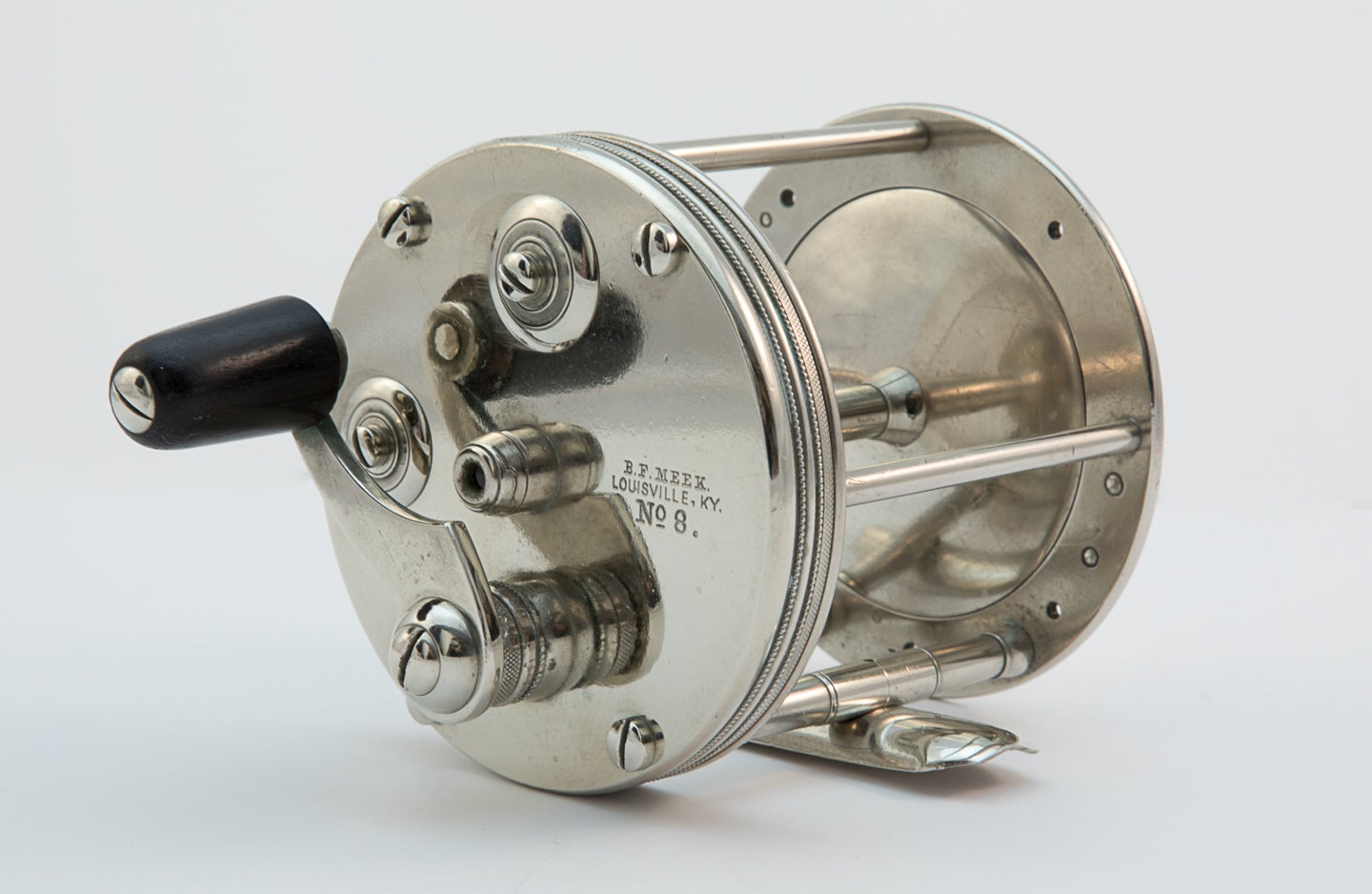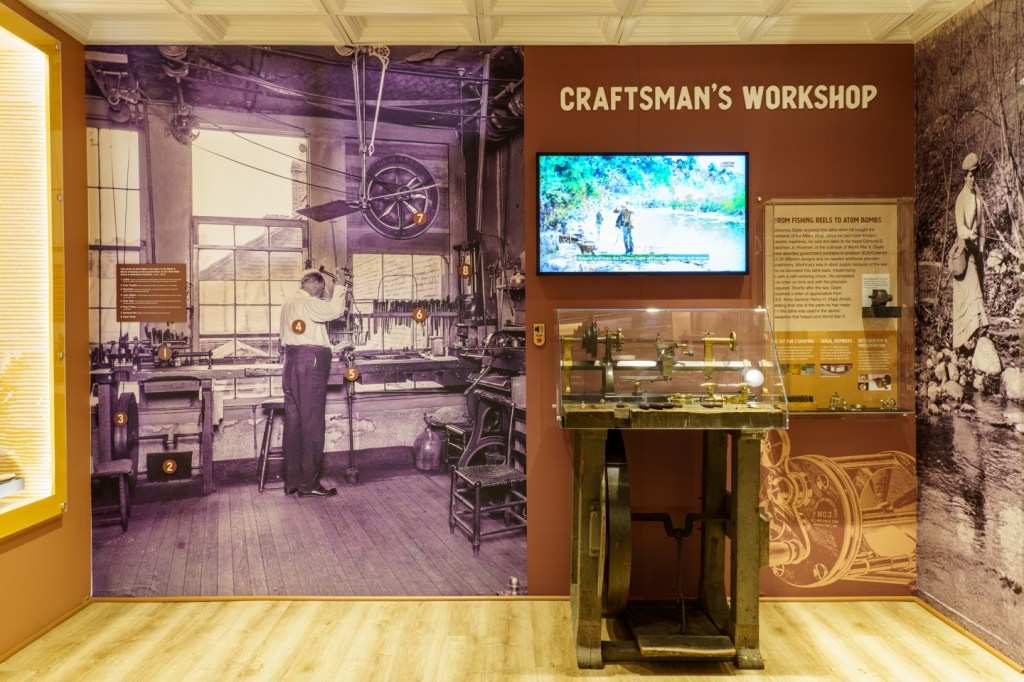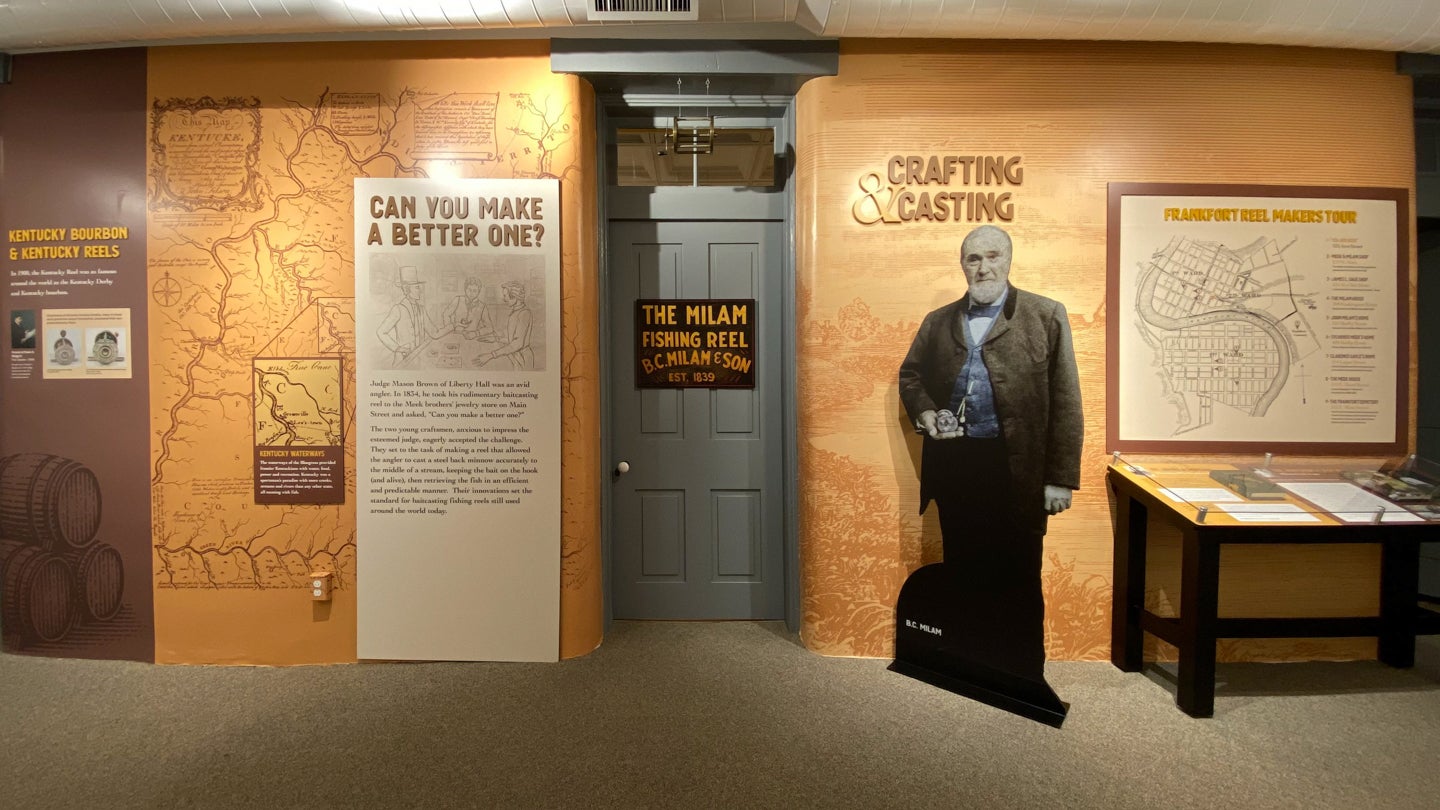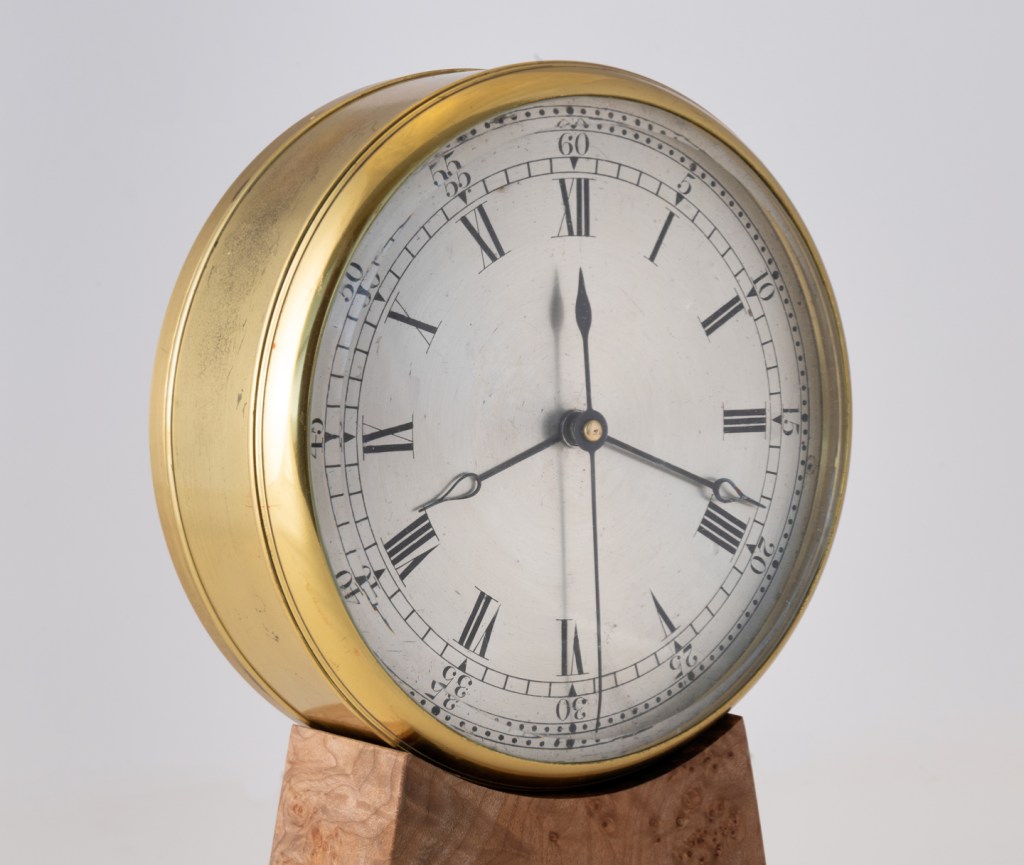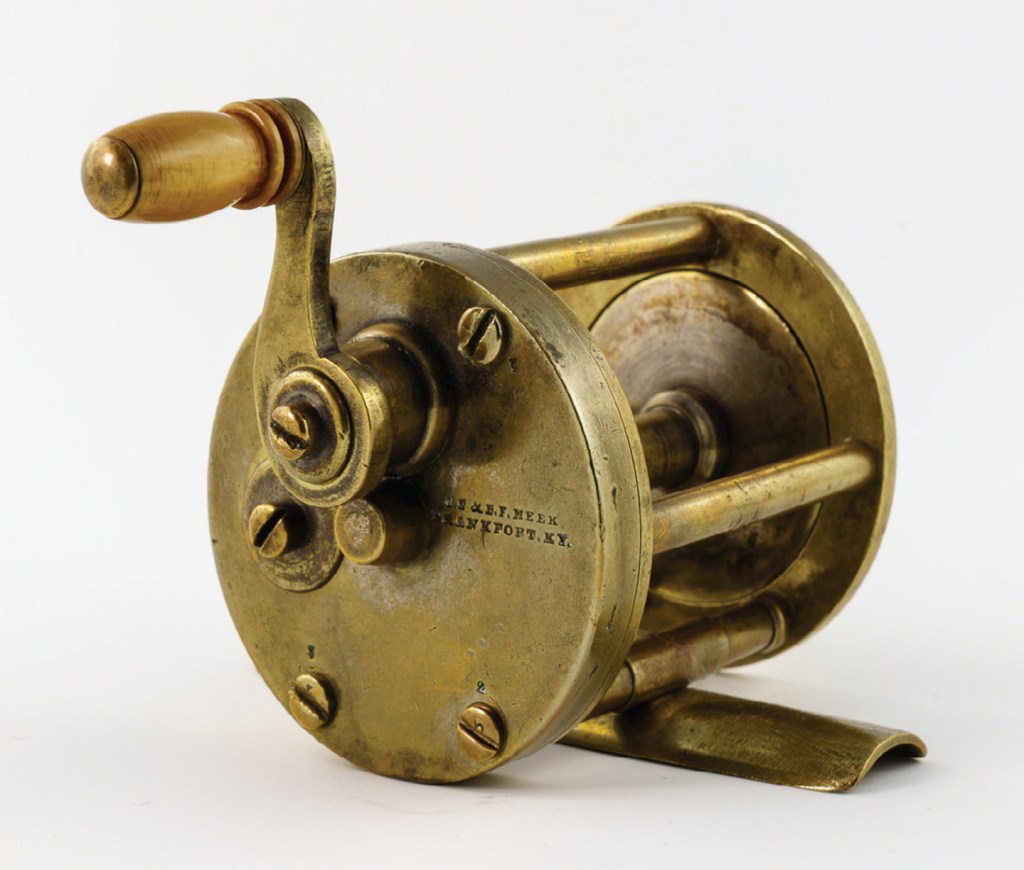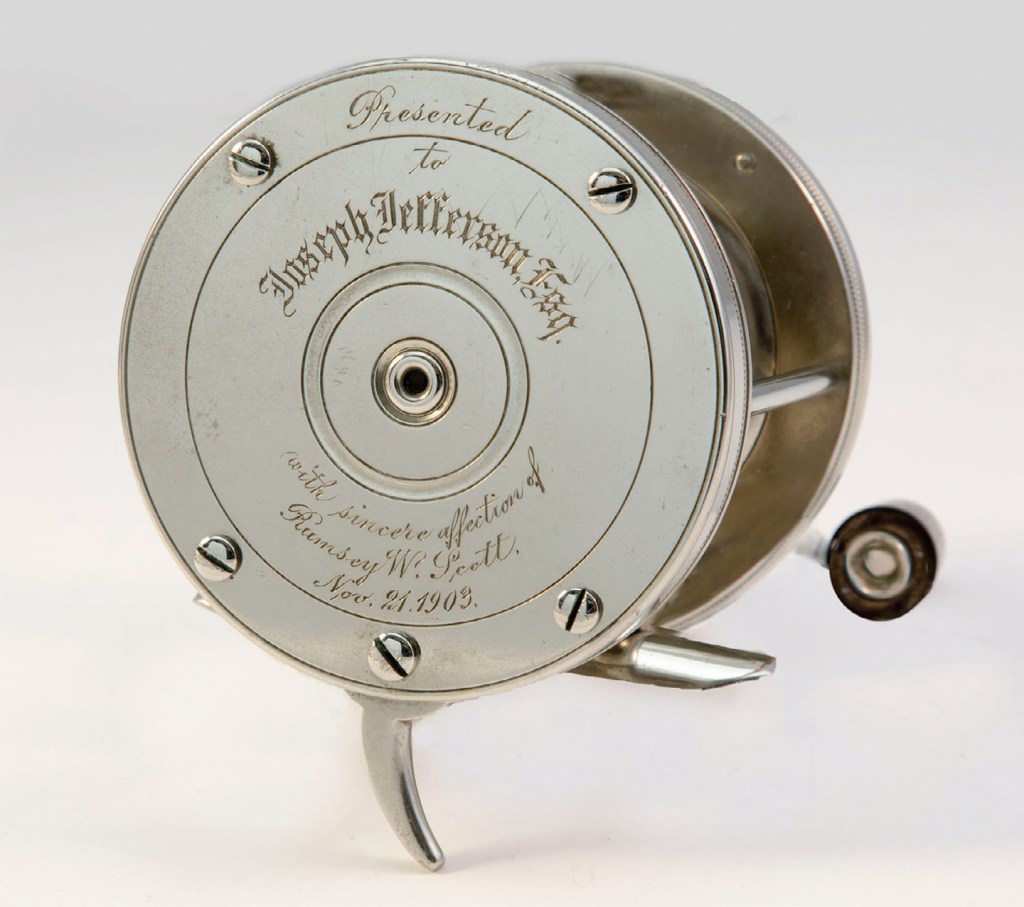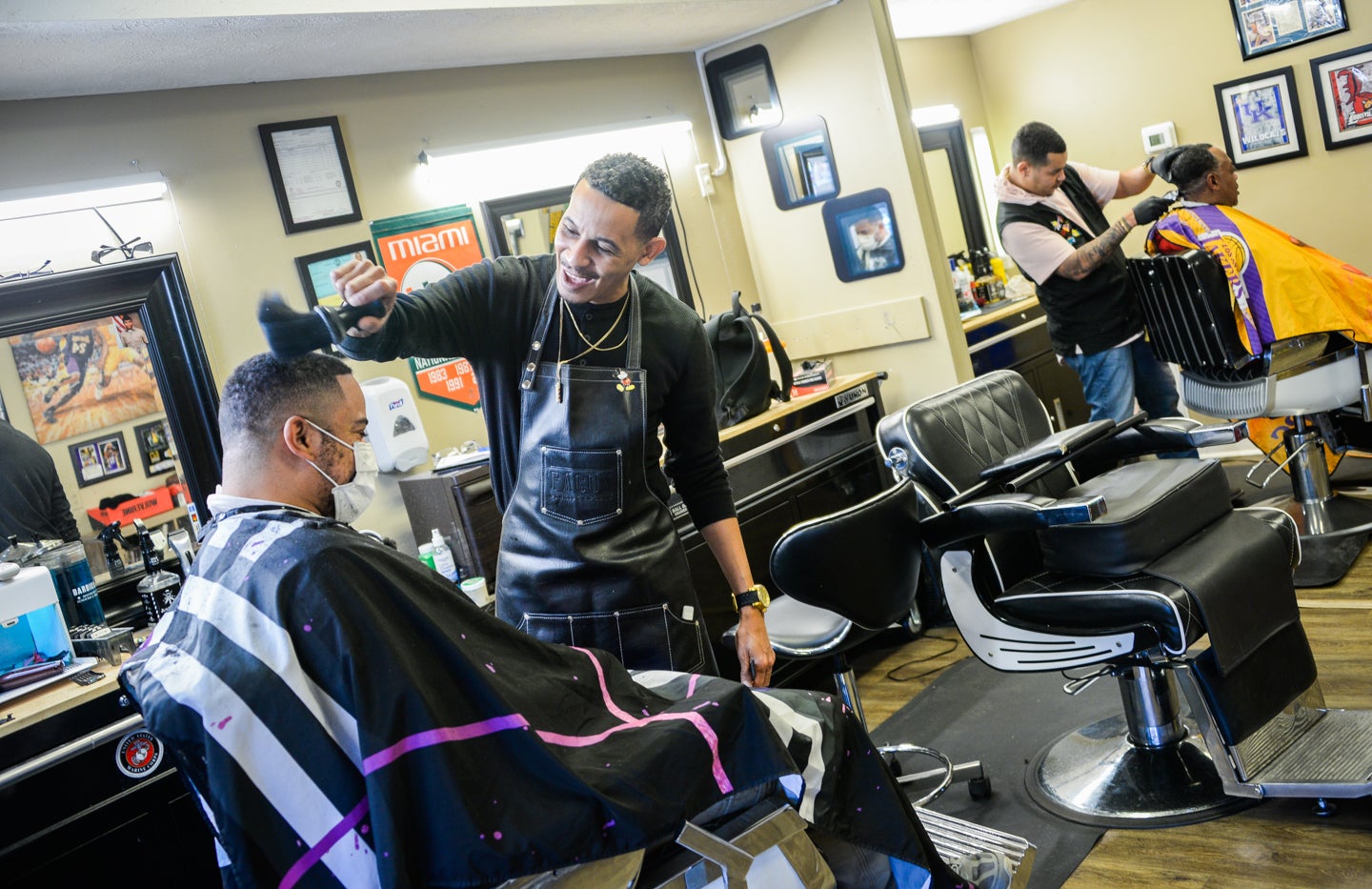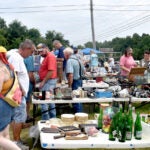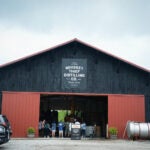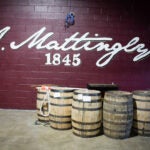Story by Betty Barr and Don Kleier
But wait! Are these fishing reels or finely crafted pieces of jewelry? Maybe both. Currently on exhibit at the Capital City Museum on Ann Street are a collection of beautifully crafted fishing reels by Frankfort jewelers and silversmiths dating from the 1830s to the mid 1900s.
Made of solid brass and German silver, they won medals at U.S. and international World Fair expositions. They were coveted by discriminating anglers, captains of industry and presidents. They helped put Frankfort on the world stage.
One day in 1834, Circuit Judge Mason Brown, the son of John Brown of Liberty Hall, came into the Meek jewelry and clock store on Main Street and asked the two young brothers working there if they could make him a better fishing reel. Judge Brown was an avid angler, but the fly reels used in the east for colder waters didn’t work that well on the warm water streams found throughout Kentucky. The two owners, Jonathan and Benjamin Meek, set about making a reel that looked like a piece of jewelry and had the precision of a fine clock. The Judge was thrilled and soon all his buddies wanted their own reels. An industry was born!
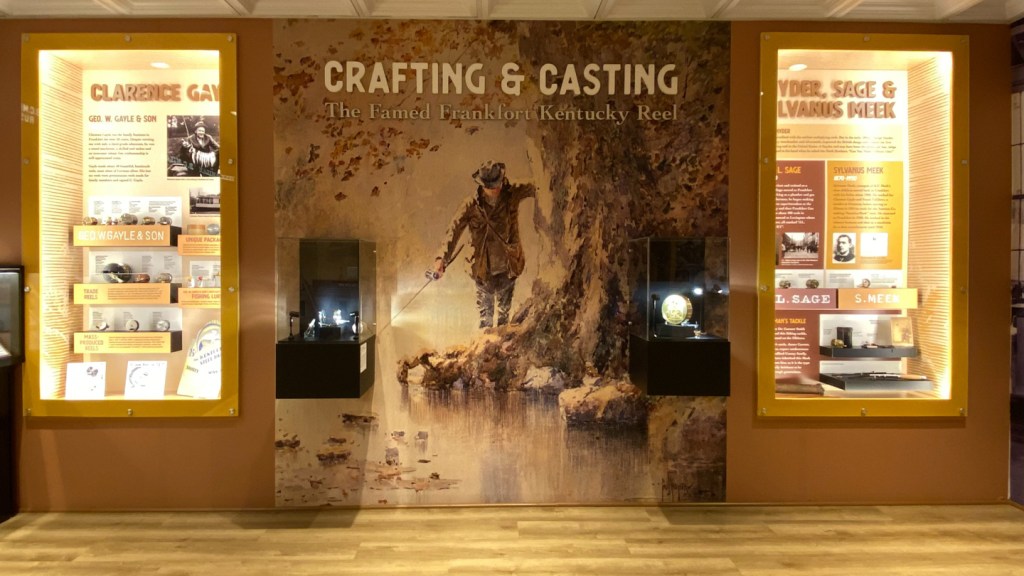
Those first reels were stamped “Meek” and later “J.F. and B.F. Meek.” The reels were 4 to 1 multiplying reels, meaning that the spool that holds the fishing line would turn four times for each turn of the crank handle. These multiplying reels would set the standard for all other baitcasting reels. What started as one man’s desire for a better fishing reel became a business that was known all over the country and the developed world.
The earliest reel on display in the exhibit is made of solid brass. Brass was used since German silver — a precursor to stainless steel — had not yet been developed. Remember, 1830s Kentucky meant no electricity, electric lighting and a limited supply chain. Most of the reels on exhibit were turned on a foot-powered lathe. The very one the Meek brothers used, made about 1800 by a guild in Switzerland, together with some of their hand tools, is also on display at the Capital City Museum.
The Meek brother’s success led to taking on 16-year-old Benjamin Cave Milam (B.C. Milam) as an apprentice. Apprenticeships were a time-honored way to learn a craft and make a living. Milam apprenticed in the Meek’s jewelry and clock business, but soon focused on fishing reel design and fabrication. A beautiful example of B.C. Milam’s artistic work is a sterling silver reel with gold adornments and a beautifully engraved name and leaping bass on its tail plate. Many of these early reels were engraved, given as gifts and handed down through the generations.
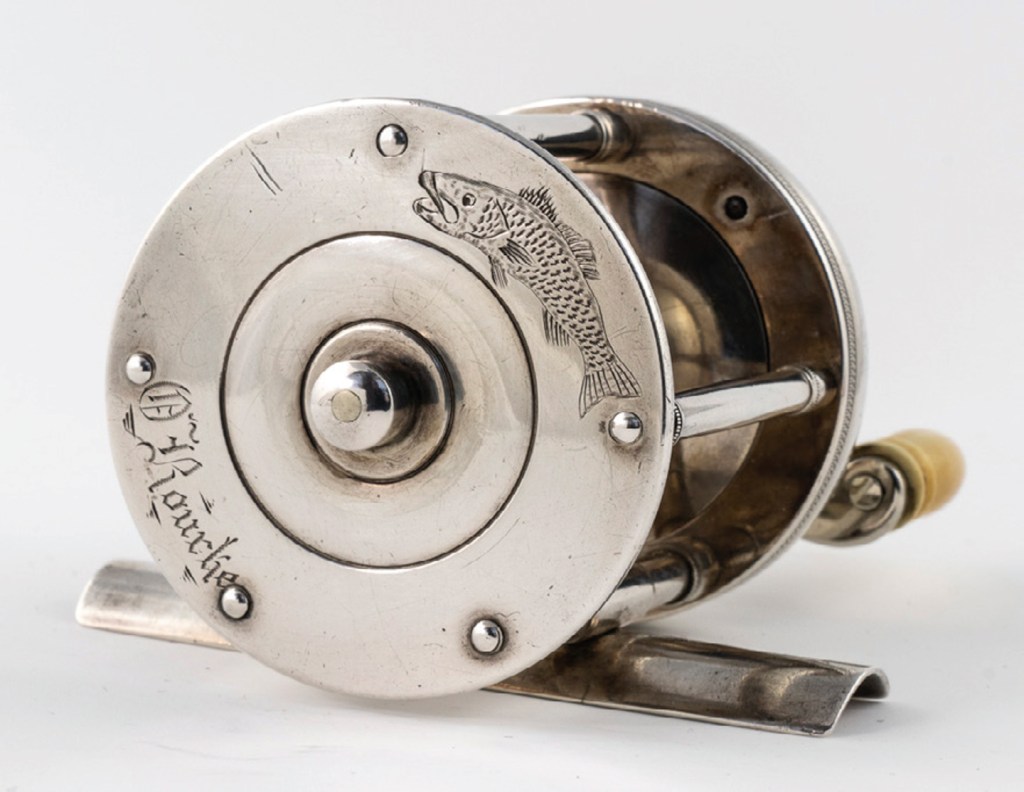
Two special display cases highlight the exquisite work of Benjamin Meek, including a reel titled “The Most Famous Fishing Reel in America.” This reel is engraved with both the name of Preston Scott, who was a Civil War surgeon, and with the name of Dr. Scott’s son documenting his gift of it to his grandfather-in-law, Joseph Jefferson, who was the most famous stage actor of the late 1800s. Jefferson was a fishing buddy of President Grover Cleveland. Upon Jefferson’s death, he willed this reel, his “Best Kentucky Reel,” to President Cleveland. News of this inheritance filled the newspapers and even inspired poems. The reel itself is solid German silver with a jeweled movement, like that found in an expensive clock.
Speaking of clocks, on display too, is a handmade, one-of-a-kind chronometer crafted by Benjamin Meek. Dated 1852, experts estimate it took Meek 10 years to design and cut this masterpiece. It is believed to be the first clock movement made in Kentucky. During this time, Kentucky clocks had their cases made locally but their movements were made in factories in the Northeast. The Meek chronometer is gilded brass that is heavily engraved. The face is silvered with hand cut numerals. All of this done in a time of no electricity and with just candlelight. A remarkable achievement and a signature Frankfort product.
James L Sage, another prominent fishing reel maker, moved to Frankfort when he was 28. He was accomplished at many skills and held careers as a gunsmith, a gas pipe fitter and as superintendent of the Frankfort Gas Works and the Cove Spring Water Works. He later made precision mathematical instruments and applied those skills to manufacturing handmade fishing reels in the style of the Meeks and Milams.
The last of the handmade Frankfort reel makers featured in the exhibit is Clarence Gayle. He developed a reputation as a skilled machinist and won several U.S. government contracts that were fulfilled in his backyard machine shop on Logan Street. He was an innovator and applied new materials and concepts to the manufacturing of fishing reels.
Clarence purchased the entire contents of the Milam reel shop upon the death of John Milam, who was B.C.’s son. The aforementioned foot-powered lathe came with the contents but Clarence, now in the age of electricity and mass production, considered it an antique. He sold it to one of his employees as a hobby lathe.
After WWII broke out, Clarence secured a large contract from the U.S. government. This contract required him to make hundreds of precision metal pieces. He needed more equipment to fulfill the order. However, since all manner of precision equipment was hard to buy, he borrowed the old lathe to help fulfill the contract. After the war, Gen. Hap Arnold, commanding General of the Pacific, sent him a letter stating that one of the parts he made on the original shop lathe was used in the atomic weapons that helped end WWII.
Stepping into the exhibit at the Capital City Museum simulates stepping into a reel maker’s workshop. The exhibit not only boasts some of the original tools and manufacturing equipment, but includes the original display reel used in B.C. Milam’s shop window. The hallway walls before you enter the exhibit tell a story about the connection between fishing reels, bourbon and Kentucky’s waterways, and demonstrate why this industry was so successful in Frankfort.

Once inside the exhibit, the walls are lined with original fishing reels, advertising materials, photographs and beautiful pieces of history. A must-see two-minute video illustrates the story of these fascinating reels and Frankfort’s place in history. You can even take a picture with B.C. Milam himself at the selfie station and immerse yourself in the history of the reels by following the suggested walking tour to the homes and graves of the reel makers and the original shop location just two blocks away. A Kentucky Historic Marker stands in front of the shop.
The Capital City Museum underwent a large-scale renovation in 2022, becoming a work of art itself. Stopping in guarantees a look at the history and stories which make the community so unique.
Interested in learning more about the fishing reels and their makers? Published in 2022, “Crafting & Casting: The Famed Frankfort Kentucky Reels,” tells the complete story of the famed Frankfort fishing reels and includes many beautiful, color photographs taken by local artist Gene Burch. The book describes each artifact and tells the story of Frankfort during the time the reels were made.
“Crafting & Casting: The Famed Frankfort Kentucky Reels” is available for purchase at the Capital City Museum’s gift shop or online at CapitalCityMuseum.com https://capital-city-museum.square.site/product/crafting-casting-the-famed-kentucky-reel/134?cp=true&sa=true&sbp=true&q=false ). All sales of the book go directly to the Capital City Museum, a 501c3. The Capital City Museum is located at 325 Ann St., in Frankfort. Hours are 10 a.m.-4 p.m. Monday-Saturday. Admission is free.
